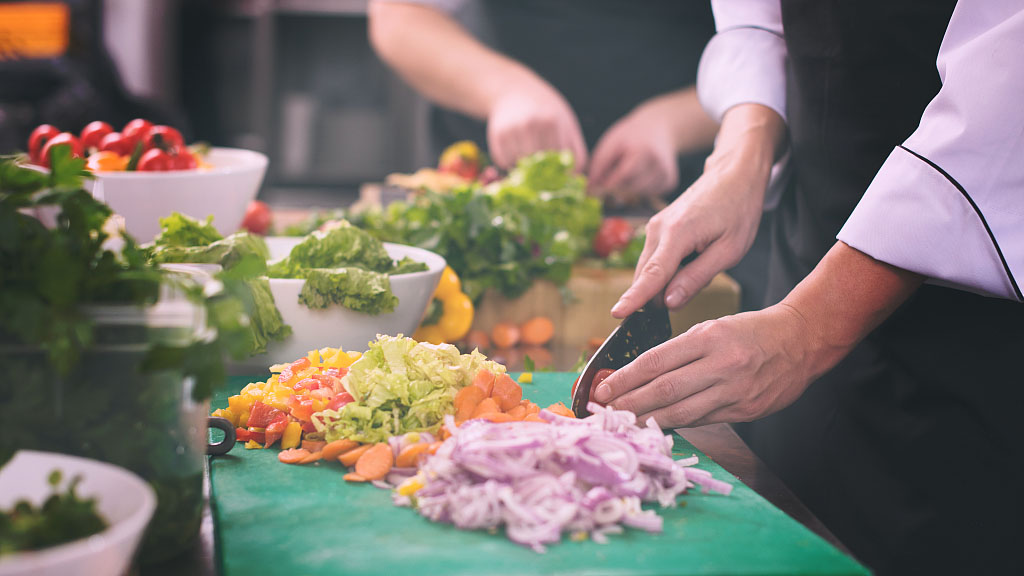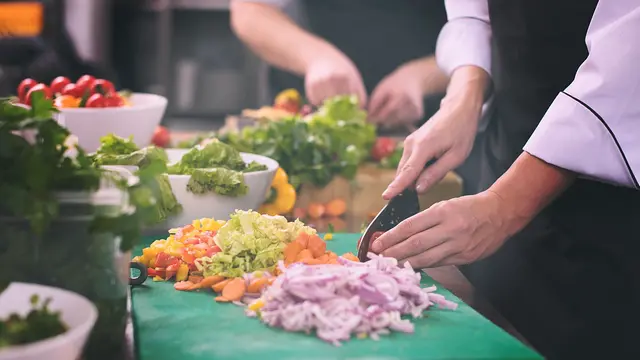03:44

China's food beverage (FB) industry – for years a sure bet of 10 percent annual growth – is being forced to innovate in the wake of the COVID-19 pandemic.
According to data from the China Cuisine Association, before the pandemic, the market was growing at almost 11 percent a year, and worth 4.7 trillion yuan (about 670 billion U.S. dollars).Unlike other countries, China's FB market is highly fragmented, with 8 million restaurants, 80 percent of which is Chinese cuisine.
A leading figure in the industry is Dong Zhenxiang, the founder and chairman of Dadong Group, also deputy chair of the China Cuisine Association. Dong sees the FB industry moving away from massive restaurants for banquets and towards "small is beautiful," where the food is more refined, spontaneous, and with personality. "People don't want big meals, rich meals. The trend is healthier, more casual dining."
Data from China Hospitality Association shows that the brutal shock of the lockdowns and tighter hygiene requirements has forced a third of Chinese restaurants into closing or reducing outlets. But 4 percent of those market leaders, restaurants with full coffers and bullish outlooks, continue to expand and rethink their business mix; more online, more pre-packaged food, more casual affordable eateries. Hotpot chain Haidilao added 100 outlets in the first half, even though it expects to have lost about 1 billion yuan in sales for that period.
TRB group is famous for its spectacular views and impeccable service, and has also gone online to engage with customers and deliver to their homes, even cocktails. Ignace Lecleir, founder and CEO of TRB group, admits that the delivery of sophisticated cuisine has its challenges because any imperfection that can be corrected in a dining-in setting is difficult in a home-delivered situation. No matter how steep the learning curve, innovation is no longer a plus, but a must.
Meanwhile, the Dadong group is also hoping to take advantage of the opportunities amid the pandemic-led downturn to add outlets. Rents are cheaper and there is less competition.
The other change from the pandemic is how Chinese food is served. For years the industry has been faced with the need to go towards individual servings, which are more hygienic than the traditional shared model. Dong says the trend has accelerated due to the pandemic, so even if food isn't ordered in individual servings, there would either be communal cutlery or chopsticks, or servers would dole out portions onto individual plates.
At a time when diners are wallet-shy and nervous about eating out, restaurants are using deals and discounts, online engagement plus a big dose of creativity. TRB is doing crossover dining with other restaurants like Susu and Hatsune. Dadong's menus will be refreshed twice a month to reflect the 24 solar terms in the Chinese calendar – there are intriguing dishes such as Parma ham dumplings, mung bean jelly with basil chili oil.
Aside from a passion for the industry, it is Chinese people's love of food that keeps restaurateurs hopeful about recovery.
TRB's Lecleir said: "Chinese people love to eat out... more than anywhere in the world." This sentiment is echoed by Dong who said: "The future of the industry will see a change in the format of eating out, but people are going to have three meals no matter what."
And that philosophy of calmly dealing with turmoil, accepting and adjusting, is the secret sauce for longevity in China's FB industry.
 简体中文
简体中文

